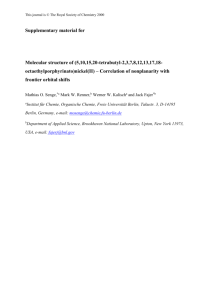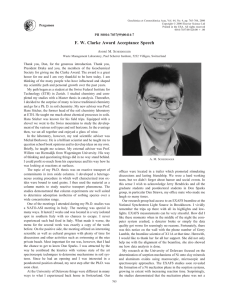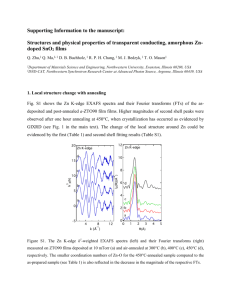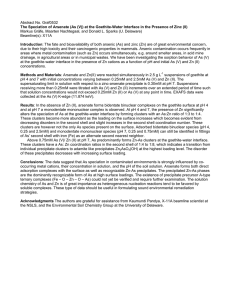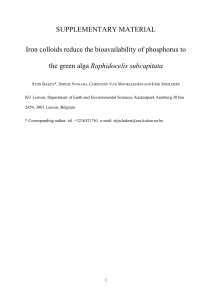Details of the experiment and data analysis. Table S1
advertisement
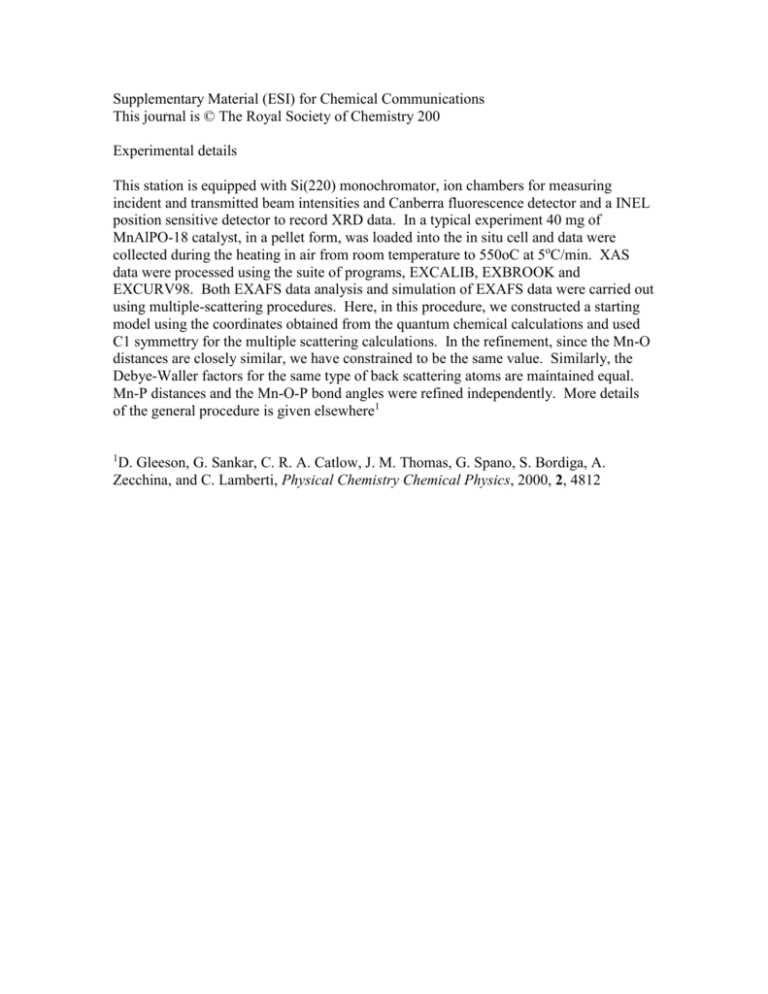
Supplementary Material (ESI) for Chemical Communications This journal is © The Royal Society of Chemistry 200 Experimental details This station is equipped with Si(220) monochromator, ion chambers for measuring incident and transmitted beam intensities and Canberra fluorescence detector and a INEL position sensitive detector to record XRD data. In a typical experiment 40 mg of MnAlPO-18 catalyst, in a pellet form, was loaded into the in situ cell and data were collected during the heating in air from room temperature to 550oC at 5oC/min. XAS data were processed using the suite of programs, EXCALIB, EXBROOK and EXCURV98. Both EXAFS data analysis and simulation of EXAFS data were carried out using multiple-scattering procedures. Here, in this procedure, we constructed a starting model using the coordinates obtained from the quantum chemical calculations and used C1 symmettry for the multiple scattering calculations. In the refinement, since the Mn-O distances are closely similar, we have constrained to be the same value. Similarly, the Debye-Waller factors for the same type of back scattering atoms are maintained equal. Mn-P distances and the Mn-O-P bond angles were refined independently. More details of the general procedure is given elsewhere1 1 D. Gleeson, G. Sankar, C. R. A. Catlow, J. M. Thomas, G. Spano, S. Bordiga, A. Zecchina, and C. Lamberti, Physical Chemistry Chemical Physics, 2000, 2, 4812 Table : The structural parameters obtained for calcined MnAlPO-18 catalyst from the EXAFS data analysis using multiple scattering procedure, taking quantum mechanically derived structure as the starting point. Mn-O distance (Å) Mn-P distance (Å) Mn-O-P Bond Angle (degrees) 1.85 1.85 1.85 1.85 3.22 3.31 3.13 3.13 148 161 136 138 Mn-O Debye-Waller Factor (Å2) 0.005 0.005 0.005 0.005 Mn-P Debye-Waller Factor (Å2) 0.007 0.007 0.007 0.007 6 (a) (b) 25 4 20 FT Magnitude 0 3 k (k) 2 15 10 -2 5 -4 0 -6 2 4 6 8 k /Å -1 10 12 0 1 2 3 4 5 6 R/Å Fig. S1: Comparison of the (a) Mn K-edge experimental EXAFS data (solid line) with the one simulated (employing full multiple scattering method available in the EXCURV program) using the structure determined by the quantum mechanical method for the highspin Mn(III) ion (dashed line). Note that the frequencies of the simulated EXAFS data match well the experimental one (also seen in the first peak of the FT, shown in (b)). 25 FT Magnitude 20 15 10 5 0 0 1 2 3 4 5 6 R/Å Fig. S2: Fourier transform of the experimental EXAFS data (solid line) and the calculated EXAFS (dashed curve) obtained from the best fit, shown in figure 2.


